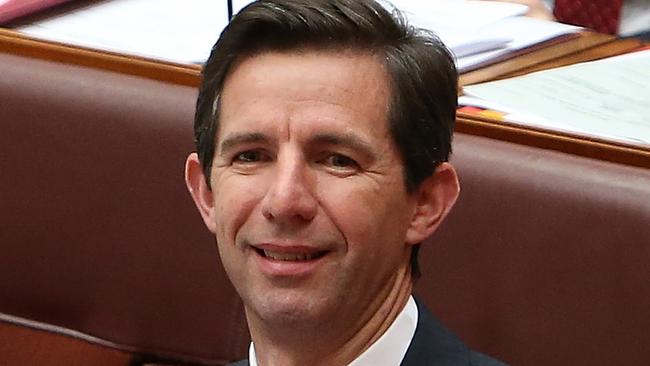
It was a definite low point for former education minister Simon Birmingham when he suggested the executive director of the Victorian Catholic Education Office could be “bought for a few pieces of silver”.
What was he thinking? Did he honestly believe it was smart politics to declare hostility to the Catholic school system, and to Catholics in general, in this way?
Let’s not forget that one-fifth of students are educated in Catholic schools and Labor was making hay from Birmingham’s mishandling of the situation.
There is no doubt Birmingham had to go as education minister. Arguably, the fiasco over the funding of Catholic schools was one of the factors contributing to the demise of Malcolm Turnbull.
What is less understandable is the fact that Birmingham hasn’t faced a serious demotion under Scott Morrison.
One of Birmingham’s problems was that he was egged on by all the wrong people — the bungling bureaucrats in the department who have long held the view that the Catholic sector receives excessively favourable treatment and left-wing, zealous education policy experts.
The proposed Gonski 2.0 funding model was inherently flawed, in part because it continued to rely on the untrustworthy socio-economic status model, which used census data to estimate parents’ capacity to contribute to the cost of their children’s education.
Indeed, the first Gonski report recognised this deficiency and had recommended an overhaul.
Birmingham ignored this advice and pressed on with a funding model that produced quite bizarre outcomes. Parents of some high fee schools were deemed to have less capacity to pay than parents of poor parish schools in inner-city areas.
There were other technical problems Birmingham refused to acknowledge, such as the shorter transition period for adjustment for overfunded Catholic schools compared with other schools.
It was a monumental mess.
It has now taken a fist full of dollars and a new minister, Dan Tehan, to sort out this politically damaging disaster.
The Catholic school system will receive an extra $1.1 billion over the next four years and a total of $3.2bn extra over the decade.
In order to placate other non-government schools, they will receive an extra $1.2bn over the decade.
The recommendations of the Chaney report, commissioned late by Birmingham to look at the SES model, will be implemented. This means a direct measure of parental capacity to contribute will be implemented from 2020 using linked income tax records.
As for Labor’s criticism that yesterday’s deal does nothing for public schools, federal funding for these schools rises from $7.3bn to $13.7bn by 2029, an increase of nearly 90 per cent.
What we will get for this increased funding is unclear, but at this stage Tehan’s objective of achieving a satisfactory resolution to this politically vexed issue has been met — and not before time.



